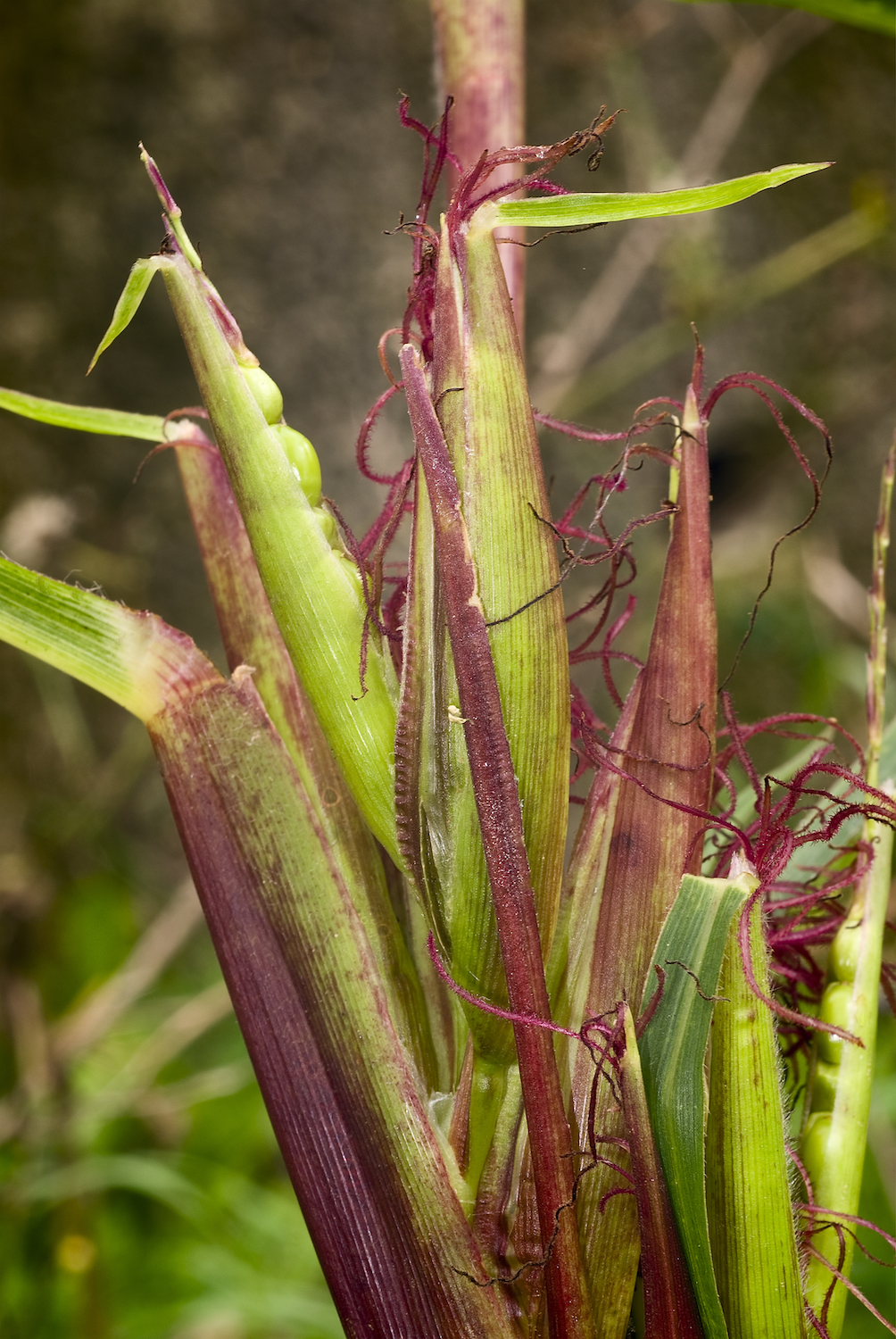What Is An Gentic Makeup Of An Organism
What Is Genetic Modification?

Genetic modification is the process of altering the genetic makeup of an organism. This has been done indirectly for thousands of years by controlled, or selective, breeding of plants and animals. Modern biotechnology has fabricated it easier and faster to target a specific gene for more-precise alteration of the organism through genetic applied science.
The terms "modified" and "engineered" are often used interchangeably in the context of labeling genetically modified, or "GMO," foods. In the field of biotechnology, GMO stands for genetically modified organism, while in the food industry, the term refers exclusively to nutrient that has been purposefully engineered and not selectively bred organisms. This discrepancy leads to defoliation among consumers, and so the U.S. Food and Drug Administration (FDA) prefers the term genetically engineered (GE) for food.
A brief history of genetic modification
Genetic modification dates back to ancient times, when humans influenced genetics by selectively breeding organisms, according to an commodity by Gabriel Rangel, a public health scientist at Harvard University. When repeated over several generations, this procedure leads to dramatic changes in the species.
Dogs were probable the starting time animals to be purposefully genetically modified, with the beginnings of that effort dating back about 32,000 years, according to Rangel. Wild wolves joined our hunter-gatherer ancestors in Eastern asia, where the canines were domesticated and bred to accept increased docility. Over thousands of years, people bred dogs with different desired personality and physical traits, eventually leading to the broad variety of dogs we run into today.
The earliest known genetically modified plant is wheat. This valuable ingather is idea to have originated in the Middle East and northern Africa in the surface area known every bit the Fertile Crescent, according to a 2015 commodity published in the Journal of Traditional and Complementary Medicine. Ancient farmers selectively bred wheat grasses commencement around 9000 B.C. to create domesticated varieties with larger grains and hardier seeds. Past 8000 B.C., the cultivation of domesticated wheat had spread across Europe and Asia. The continued selective breeding of wheat resulted in the thousands of varieties that are grown today.
Corn has also experienced some of the most dramatic genetic changes over the by few 1000 years. The staple ingather was derived from a establish known as teosinte, a wild grass with tiny ears that bore only a few kernels. Over time, farmers selectively bred the teosinte grasses to create corn with large ears bursting with kernels.
Beyond those crops, much of the produce we swallow today — including bananas, apples and tomatoes — has undergone several generations of selective breeding, according to Rangel.
The technology that specifically cuts and transfers a piece of recombinant Dna (rDNA) from ane organism to another was developed in 1973 past Herbert Boyer and Stanley Cohen, researchers at the University of California, San Francisco, and Stanford University, respectively. The pair transferred a piece of Deoxyribonucleic acid from i strain of leaner to another, enabling antibiotic resistance in the modified bacteria. The post-obit yr, 2 American molecular biologists, Beatrice Mintz and Rudolf Jaenisch, introduced foreign genetic material into mouse embryos in the first experiment to genetically modify animals using genetic engineering techniques.
Researchers were as well modifying bacteria to be used equally medications. In 1982, human insulin was synthesized from genetically engineered Due east. coli bacteria, becoming the first genetically engineered homo medication canonical by the FDA, according to Rangel.

Genetically modified food
At that place are four primary methods of genetically modifying crops, according to The Ohio State Academy:
- Selective breeding: Two strains of plants are introduced and bred to produce offspring with specific features. Between ten,000 and 300,000 genes can be afflicted. This is the oldest method of genetic modification, and is typically not included in the GMO food category.
- Mutagenesis: Plant seeds are purposely exposed to chemicals or radiation in order to mutate the organisms. The offspring with the desired traits are kept and further bred. Mutagenesis is also not typically included in the GMO nutrient category.
- RNA interference: Individual undesirable genes in plants are inactivated in order to remove any undesired traits.
- Transgenics: A gene is taken from i species and implanted in some other in order to introduce a desirable trait.
The last two methods listed are considered types of genetic engineering science. Today, certain crops have undergone genetic engineering to meliorate ingather yield, resistance to insect damage and immunity to plant diseases, also every bit to introduce increased nutritional value, according to the FDA. In the market, these are chosen genetically modified, or GMO crops.
"GMO crops presented a lot of promise in solving agricultural issues," said Nitya Jacob, ingather scientist at Oxford College of Emory Academy in Georgia.
The get-go genetically engineered crop approved for cultivation in the U.S. was the Flavr Savr lycopersicon esculentum in 1994. (In order to be grown in the U.S., genetically modified foods must exist accepted by both the Environmental Protection Agency (EPA) and the FDA.) The new tomato had a longer shelf-life cheers to the deactivation of the gene that causes tomatoes to kickoff becoming squishy as soon equally they're picked. The love apple was also promised to have enhanced flavor, according to the University of California Division of Agronomics and Natural Resources.
Today, cotton fiber, corn and soybeans are the about common crops grown in the U.S. Most 93 percent of soybeans and 88 per centum of corn crops are genetically modified, according to the FDA. Many GMO crops, such as modified cotton wool, have been engineered to be resistant to insects, significantly reducing the need for pesticides that could contaminate groundwater and the surrounding environs, according to the U.S. Department of Agriculture (USDA).
In recent years, the widespread cultivation of GMO crops has become increasingly controversial.
"One business organization is the touch on of GMOs on the surroundings," Jacob said. "For example, pollen from GMO crops tin drift to fields of non-GMO crops likewise as into weed populations, which can atomic number 82 to not-GMOs acquiring GMO characteristics due to cross-pollination."
A handful of large biotechnology companies take monopolized the GMO crop industry, Jacob said, making information technology hard for private, small farmers to make a living. Even so, while some farmers may be driven out of business, those that work with the biotech companies may reap the economical benefits of increased crop yields and reduced pesticide costs, the USDA has said.
Labeling of GMO food is important to a majority of people in the U.S., according to polls conducted by Consumer Reports, The New York Times and The Mellman Group. People strongly in favor of GMO labeling believe that consumers should be able to decide whether they wish to purchase genetically modified foods.
Notwithstanding, Jacob said, in that location is no clear scientific evidence that GMOs are dangerous for homo health.
Genetically modifying animals and humans
Today, livestock are often selectively bred to improve growth rate and muscle mass and encourage affliction resistance. For example, certain lines of chickens raised for meat have been bred to grow 300 percent faster today than they did in the 1960s, co-ordinate to a 2010 article published in the Periodical of Anatomy. Currently, no animal products on the marketplace in the U.S., including chicken or beef, are genetically engineered, and, therefore, none are classified as GMO or GE food products.
For the by several decades, researchers accept been genetically modifying lab animals to decide ways the biotechnology could 1 day help in treating human disease and repairing tissue damage in people, according to the National Man Genome Research Constitute. Ane of the newest forms of this applied science is called CRISPR (pronounced "crisper").
The technology is based on the ability of the bacterial immune system to use CRISPR regions and Cas9 enzymes to inactivate foreign Dna that enters a bacterial cell. The same technique makes it possible for scientists to target a specific gene or grouping of genes for modification, said Gretchen Edwalds-Gilbert, associate professor of biology at Scripps College in California.
Researchers are using CRISPR engineering science to search for cures for cancer and to find and edit single pieces of Dna that may lead to time to come diseases in an individual. Stalk jail cell therapy could also brand utilise of genetic engineering science, in the regeneration of damaged tissue, such as from a stroke or heart set on, Edwalds-Gilbert said.
In a highly controversial written report, at to the lowest degree one researcher claims to accept tested the CRISPR technology on human embryos with the goal of eliminating the potential for certain diseases. That scientist has faced harsh scrutiny and was placed nether house arrest in their home state of China for some fourth dimension.
The moral dilemma
The engineering may be available, but should scientists pursue genetic modification studies in humans? It depends, said Rivka Weinberg, a professor of philosophy at Scripps College.
"When it comes to something like a [new] applied science, yous have to call back virtually the intention and unlike uses of it," Weinberg said.
The majority of medical trials for treatments that make utilise of genetic engineering are performed on consenting patients. Even so, genetic engineering on a fetus is some other story.
"Experimentation on human being subjects without their consent is inherently problematic," Weinberg said. "At that place are not only risks, [but too] the risks are not mapped out. We don't even know what we are risking."
If the adjacent-generation engineering were available and shown to exist safe, the objections to testing it in humans would be minimal, Weinberg said. But that'due south not the instance.
"The big problem with all of these experimental technologies is that they are experimental," Weinberg said. "One of the main reasons why people were so horrified by the Chinese scientist who used CRISPR engineering on embryos is considering it is such an early stage of experimentation. Information technology is non genetic applied science. You lot are just experimenting on them."
The vast majority of the proponents for genetic engineering science realize that the engineering science isn't gear up to exist tested on humans yet, and country that the process will be used for good. The goal of genetic modification, Jacob said, "has always been to tackle problems currently facing human society."
Further reading:
- Read answers to the Earth Health Organization'southward FAQ's about GMO foods.
- See "How to Make a GMO" by Chelsea Powell, on Harvard University'south graduate student weblog.
- Read more on human genetic modification from the Center for Genetics and Lodge.
What Is An Gentic Makeup Of An Organism,
Source: https://www.livescience.com/64662-genetic-modification.html
Posted by: serranopentagess.blogspot.com



0 Response to "What Is An Gentic Makeup Of An Organism"
Post a Comment